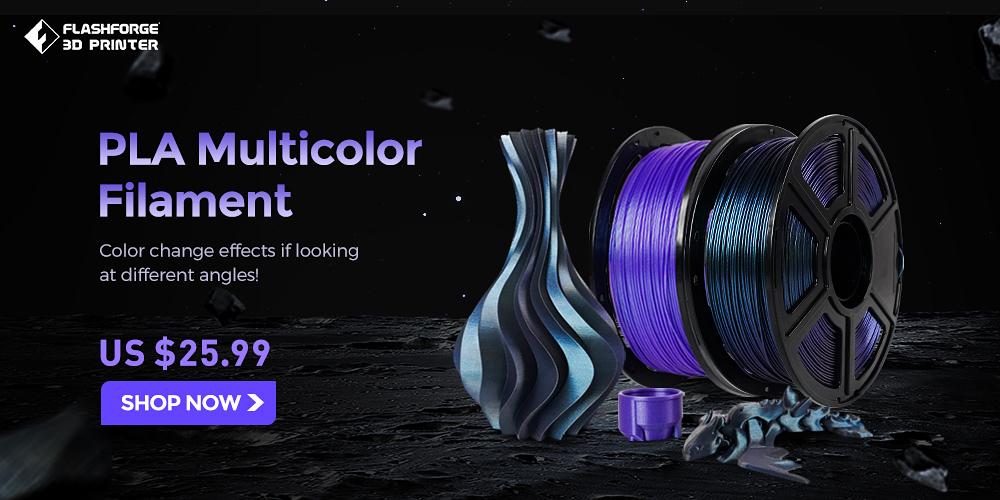3D printing filaments for your models, you should know that the process is not that complex. Printing 3D objects are no walk in the park, and it’s equally important to know that not all filaments are created equal. The process becomes much easier when you are aware of all the factors.

3D printing is unlike most run-of-the-mill hobbies. It involves sophisticated machinery, computer programming, and 3D modeling — not to mention the expense of buying a printer, filament, and other accessories. So, it’s no surprise that 3D printing can intimidate newcomers unfamiliar with its process. What if you could avoid all the hassles? For example, what if you could buy a 3D printer that comes with 3D printing-ready filament?
3D printing filaments are a type of plastic used in a 3D printer to create three-dimensional objects. Different types of 3D printing filaments are available on the market, each with unique properties. This blog post will discuss what you need to know about 3D printing filaments and how to choose the right one for your project.
What is 3D printing filament?
3D printing filaments are the materials used in FDM 3D printers to create three-dimensional objects. The most common filament material is plastic, but filaments are made of metal, glass, and wood. When choosing a 3D printing filament, you need to consider what material you want to print with and what properties the filament should have. For example, if you’re going to print with a flexible material, you would choose a different type of filament than if you tried to print with a rigid material.
Different types of 3D printing filaments are available.
Different types of 3D printing filaments available: 3D printers have recently gained much popularity. One of the reasons for this is that they allow people to create objects they would not be able to make without a 3D printer. Another reason is that many different filaments are available, each with specific benefits. We will look at the different kinds of 3d printing filaments available and how to choose one for your particular needs.
How to choose the right filaments for your project
There are a few factors to consider when choosing which 3D printing filament is suitable for your project. The first is the material the filament is made from. There are filaments made from PLA, ABS, PETG, and more. Each has different properties that can affect things like how strong or heat-resistant the final product will be.
PLA
PLA, or Polylactic Acid, is a thermoplastic derived from renewable resources like corn starch, sugar cane, or tapioca roots. PLA filaments are usually translucent, making them ideal for creating objects with a bit of transparency. PLA is biodegradable, making it more environmentally friendly than other 3D printing materials.
ABS
ABS, or acrylonitrile butadiene styrene, is a thermoplastic polymer commonly used in 3D printing. It is strong and durable, making it a popular choice for creating long-lasting 3D-printed products. However, ABS can be difficult to print with, as it tends to warp and crack. This is where ABS filament comes in.
PTEG
PTEG filament is strong and durable, making it ideal for printing objects that will be used frequently or subject to wear and tear. PTEG filament is easy to print with and produces consistent results.
TPE/TPU/TPC
One of the most exciting developments has been the rise of TPE, TPU, and TPC filaments. These advanced filaments offer several advantages over traditional materials, becoming increasingly popular for various applications. 3D printer filament materials on the market today are TPE (Thermoplastic Elastomer), TPU (Thermoplastic Polyurethane), or TPC (Thermoplastic Copolyester). These materials offer a unique set of benefits that make them ideal for various applications, from prototyping to production.
ASA
ASA filament is a 3D printer filament made from acrylonitrile butadiene styrene. One material that is gaining popularity among 3D printer users is ASA filament. ASA filament is a type of plastic similar to ABS, but it is less prone to warping and has better resistance to UV light.
PA
Polyamide, also known as nylon, is a thermoplastic polymer with a wide range of applications Polyamide, PA, the filament, is one of the most commonly used materials for 3D printing. It’s strong and durable, making it ideal for various applications, from prototypes to final products. However, PA filament is not without its drawbacks. It can be challenging to print with and tends to warp. PA filament is available in various colors and can be printed with FDM and SLA 3D printers.
Another element to consider is what kind of printer you have. Some printers work better with certain types of filament than others due to differences in nozzle size or build area requirements. The second thing to consider is the filament diameter. If you’re new to 3D printing, it’s worth learning more about 3D printer nozzle sizes. The diameter of the filament may affect how easy it is to use or how well it sticks to the print bed of your machine.
Filaments Color
Finally, consider the filament color. As you might expect, not all filaments are available in a rainbow of colors. Some varieties are available in only a few colors. If you’re new to 3D printing, you may want to select a filament that has been tried and tested by other users and manufacturers. Some filaments are blended from multiple materials and have different properties in different print sections. It’s also important to consider the quality of the filament since that can affect things like how well it sticks to the print bed, how smoothly it extrudes, and how easy it is to work with.
Another aspect is the diameter of the filament. Filaments are generally measured in diameters of 1.75mm, 2.85mm, or 3.00mm. The other thing you have to consider is the diameter of the filament. This will influence the size of the product you can make while making it easier to put in a printer and get it to stick correctly.
Consider Your Filaments Budget
For a beginner, I would recommend PLA or ABS filaments. But do your research before taking the plunge on a specific product. Quality 3D printing filaments aren’t particularly cheap. It would help if you also thought about the diameter of the filament. The width of the filament will determine how quickly it can be printed. A thicker filament will take longer than a thinner filament. It can also affect how easy the filament is to work with and how clear the finished item looks. You might also want to consider how much your filament will cost you.
Can You Help?
We don’t want to offend you, but we’re reaching out and asking for your help in leaving us a comment. It’s easy to do and only takes a few minutes. We appreciate your feedback and want to ensure your voice is heard. Thank you!
We only ask for reviews from all customers to improve our services.
Don’t you agree that reading reviews of a business’s services or products helps you make an informed decision?
Bullwinkle


